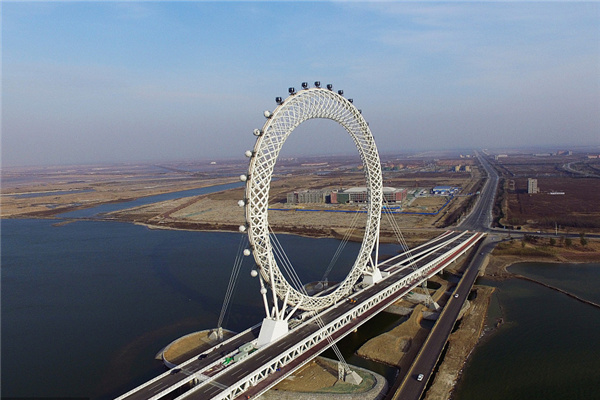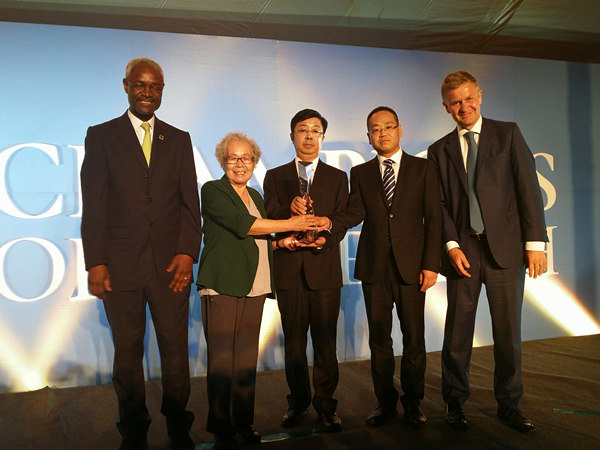

Are hatchbacks finally finding a place in China's car market?
Until a few years ago, Chinese consumers had a very strict definition of a car. It had to be a three-box sedan.
To them, a hatchback looked incomplete, as though the rear end had been chopped off. The earliest hatchback, the Citroen ZX, was a real slow-seller in the 1990s.
Today, the Chinese buyer is changing tastes, broadening the definition of what counts as a car.
Hatchbacks, which have long been popular in Europe, are typically small vehicles whose primary strength lies in their functionality.
 First, they have a cargo area integrated into the passenger cabin, with rear folding down seats leading to a large load carrying capacity.
First, they have a cargo area integrated into the passenger cabin, with rear folding down seats leading to a large load carrying capacity.
Secondly, they have easy access to the cargo area thanks to the rear window being combined with the trunk/boot lid, so that the whole back of the vehicle opens up, hence the name hatchback. This functionality is popular with families as both children and shopping are easily transported.
But with typically no car length behind the C-pillar and with each wheel nestled in each corner of the vehicle, these cars also have inherent weight and handling advantages over notchbacks.
Because of this, European manufacturers back in the eighties began releasing versions of their "family" orientated hatchback with a performance engine and suspension.
These "hot hatches" proved highly popular through the late 80s and 90s, especially with young male drivers who had money in their pocket and were looking for a bit of pizzazz.
In China, at the turn of the millennium, just 17.5 percent of passenger cars sold were hatchbacks, with volumes just breaching the 100,000 unit mark.
This volume was basically split down the middle between the Citroen ZX (Fukang) and the Suzuki Alto.
Their volumes were small fry compared with the 200,000 units of the Volkswagen Santanas and the 100,000 units of the FAW Xiali (based on Daihatsu Charade).
But the following year saw the release of the Xiali hatchback and the Chery Qiyun among others, which began to increase the hatchbacks' share of the market.
Priced at the lower end of the spectrum, they have proved accessible to many of the first-time buyers that are making up an increasingly larger proportional of the consumer demographic.
The fact that hatchbacks are usually small with small engines also proves advantageous in a market where fuel prices are rising and the government is incentivizing fuel efficient low emission vehicles.
In today's market there are some 35 hatchbacks and their total sales for 2006 will exceed 1 million units, over a quarter of all car sales. In six years hatchbacks have increased their share of the market by almost 10 percent and have seen their volumes grow ten fold.
Chery's QQ is currently the most popular, with volumes of 125,000 units from January to November last year, followed by the Chery Qiyun with 100,000 units and then the hatchback variant of the FAW Xiali with just over 90,000 units.
These three models are cheap, with a price tag of between $5,000 and $7,000, and are being bought by consumers looking for a cost efficient functional vehicle, most likely families.
But though the Qiyun growth was strong in 2006 over 2005, sales of the Xiali are down and the Chery is up just a little. These models are therefore not the ones driving the current hatckback growth.
Much of the growth among the hatchbacks is coming from the other consumer group that the vehicle targets: the young professional male. It is this group which is becoming an increasingly important part of the Chinese consumer demographic.
Sold for their style and sporty characteristics, though not as much for their outright performance as they were in Europe, models like Nissan's Tiida and the new Suzuki Swift are helping drive new hatchback sales.
Nissan's Tiida comes in both hatchback and notchback form, as does the Buick Excelle, Volkswagen Polo, Buick Sail, FAW Xiali and Suzuki Liana. Except for the two Buicks, the hatchback version of all these models is the more popular.
Due to the rising popularity of hatchbacks, and the increasing numbers of young professional males with money looking to buy cars, more manufacturers are bringing hatchback versions of their current notchback variants into the market.
Ford's Focus and Volkswagen's Bora will all be releasing hatchback editions soon.
Most of the new models known to be entering the market over the next few years are also hatchbacks. In 2007, we will see the Skoda Octavia, Toyota Yaris and Hyundai Click/Getz, among others, enter the foray. All together 14 hatchbacks are expected by 2009 alone, and this does not include hatchback variants of current models in the market.
So despite being present in China since the 90s, it is only since families and then young professional males began purchasing cars that hatchbacks finally found acceptance in the market.
With car makers now feeding these consumer groups with their latest models from around the globe, six years from now we should see hatchbacks account for 30 per cent of all car sales with volume of over 2 million units.
The author is a Bangkok-based analyst with auto industry consultancy Automotive Resources Asia Ltd.
(China Daily 01/27/2007 page7)













